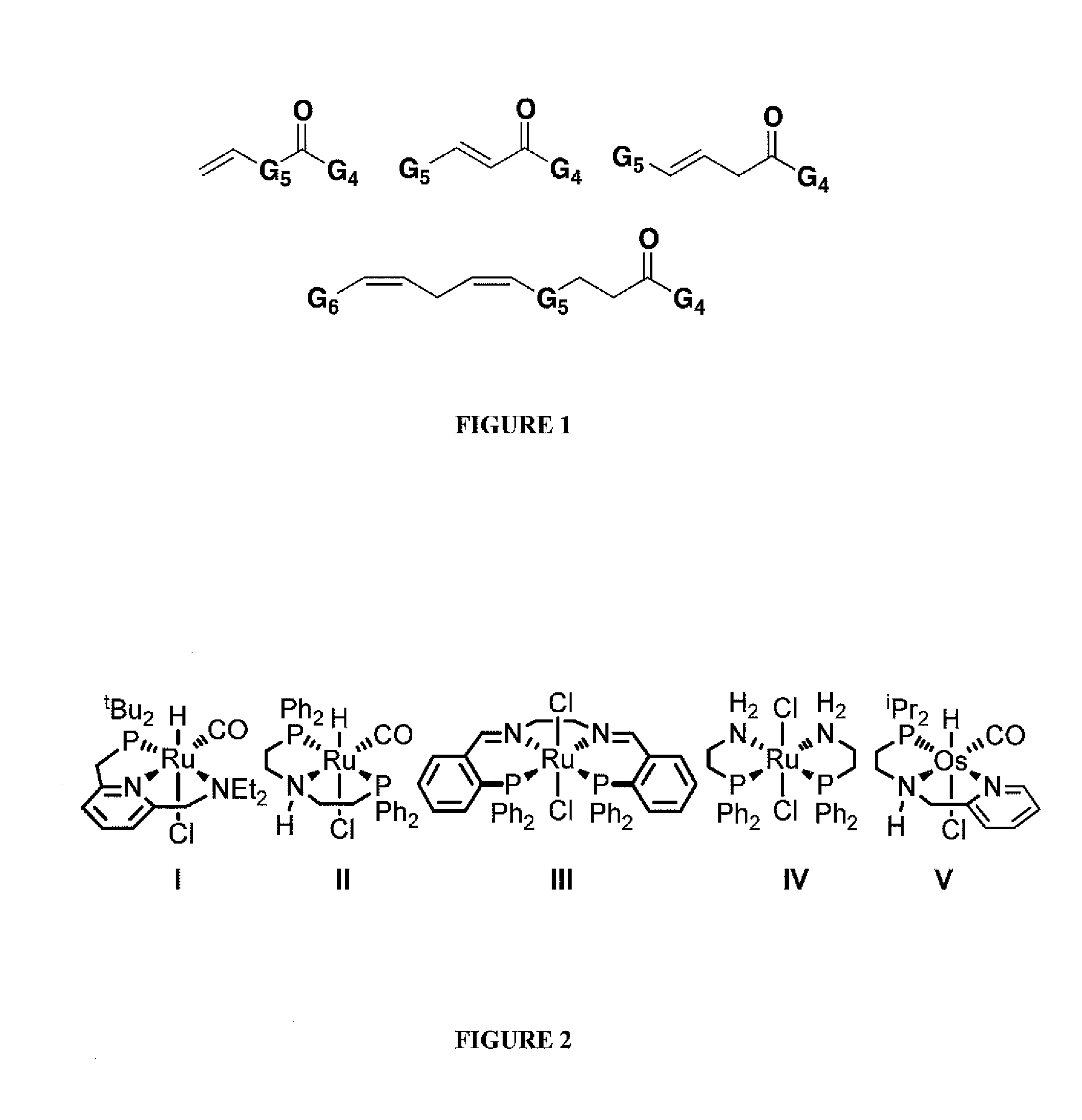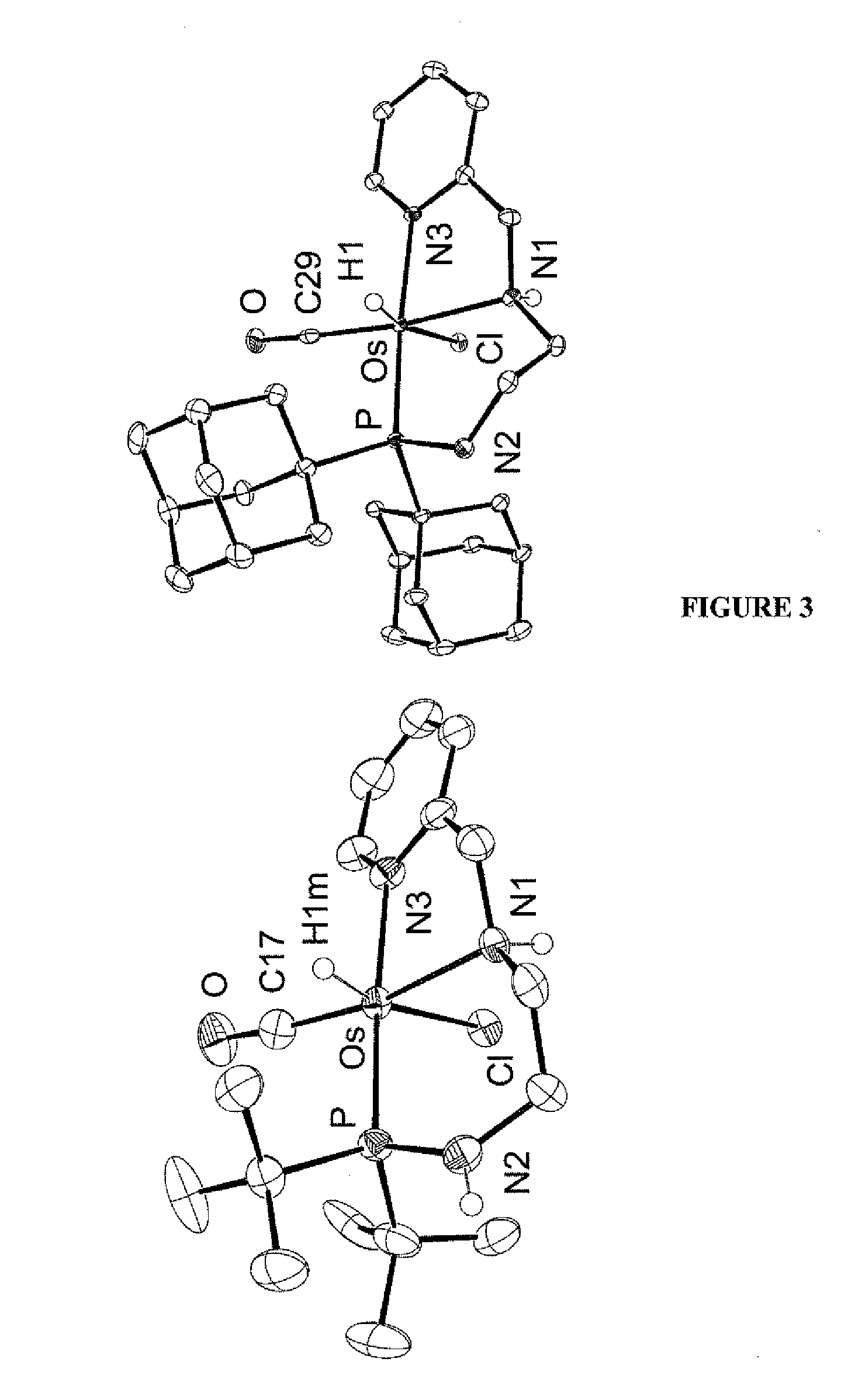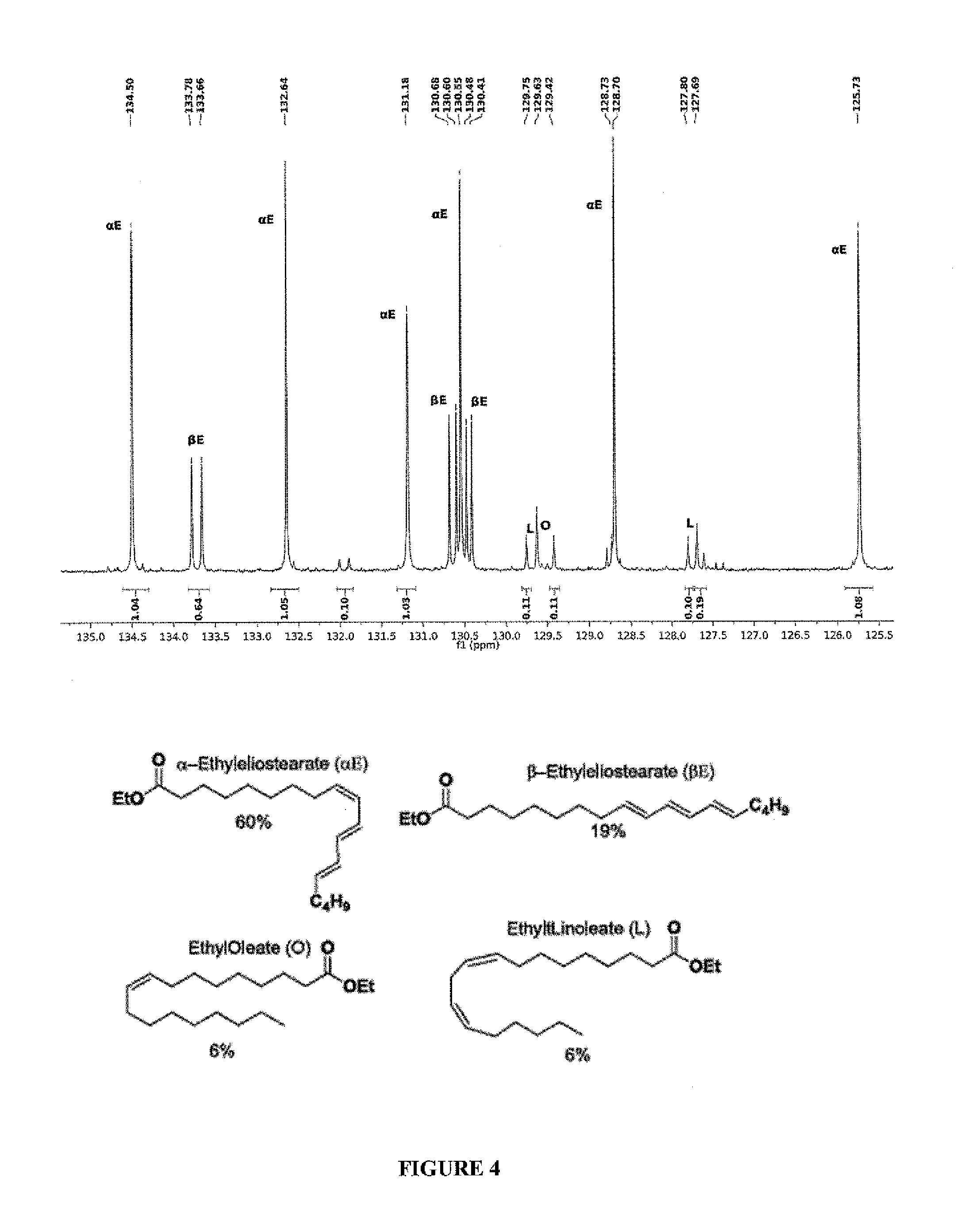Complex catalysts based on amino-phosphine ligands for hydrogenation and dehydrogenation processes
a technology of amino-phosphine ligands and complex catalysts, applied in the field of complex catalysts, can solve the problems of dangerous exothermic hydride reduction methods, inconvenient and expensive use of hydride reducing reagents, and large amount of chemical was
- Summary
- Abstract
- Description
- Claims
- Application Information
AI Technical Summary
Benefits of technology
Problems solved by technology
Method used
Image
Examples
example 1
Synthesis of H2N(Ch2)2NHCH2Py
[0135]All manipulations were carried in air. 2-Picolyl aldehyde (19.0 g, 0.178 mol) in 100 mL of methanol was added during 2 h to a solution of 1,2-ethanediamine (21.3 g, 0.178 mol) in 50 ml of methanol, and the mixture was stirred for 1 h. The resulting solution was treated portion-wise with NaBH4 (17.5 g, 0.461 mol) during 1 h, and the reaction mixture was left to stir for 1 h. After that time, methanol was removed in vacuo and the remaining semisolid was treated with 100 mL of aqueous NaOH (20 wt %) and the product was extracted with 3×50 mL of iPrOH. The combined extract was evaporated under vacuum, and the product was isolated by vacuum distillation (bp132-137° C., 0.1 mmHg) as a colorless liquid (15.3 g, 57%). 1H NMR ([D]Chloroform) δ 8.53 (ddd, J=4.9, 1.7, 0.9 Hz, 1H, Py), 7.62 (td, J=7.7, 1.8 Hz, 1H, Py), 7.29 (d, J=7.8 Hz, 1H, Py), 7.22-7.03 (m, 1H, Py), 3.90 (s, 2H, CH2), 2.88-2.75 (m, 2H, CH2), 2.75-2.62 (m, 2H, CH2), 1.49 (br, 3H, NH). 13C{1H...
example 2
Synthesis of (iPr)2PNH(CH2)2NHCH2Py
[0136]To a solution of NH2(CH2)2NHCH2Py (2.00 g, 13.2 mmol) and triethylamine (1.6 g, 15.8 mmol) in THF (25 mL) was added chlorodiisopropyl phosphine (96% assay, 2.09 g, 13.2 mmol). The resulting mixture was stirred for two hours and then evaporated to give an oily residue. The product was extracted with hexanes (3×25 mL), filtered through a glass frit and evaporated to give a colorless oil (3.19 g, 90%). 1H{31P} NMR ([D6]Benzene) δ 8.48 (dd, J=4.8, 2.7 Hz, 1H, Py), 7.14-7.00 (m, 2H, Py), 6.64 (ddd, J=6.7, 4.8, 1.8 Hz, 1H, Py), 3.86 (s, 2H, CH2), 2.99 (q, J=6.1 Hz, 2H, CH2), 2.57 (t, J=5.9 Hz, 2H, CH2), 1.83 (br, 1H, NH), 1.46 (hept, J=7.0 Hz, 2H, CH), 1.19 (br, 1H, NH), 1.04 (d, J=7.1 Hz, 6H, CH3), 1.00 (d, J=6.9 Hz, 6H, CH3). 13C{1H} NMR ([D6]Benzene) δ 161.27 (s, Py), 149.51 (s, Py), 135.84 (s, Py), 121.95 (s, Py), 121.62 (s, Py), 55.57 (s, CH2), 52.48 (d, J(CP)=6.2 Hz, CH2), 48.87 (d, J(CP)=23.7 Hz, CH2), 26.99 (d, J(CP)=13.2 Hz, CH3), 19.48 (d...
example 3
Synthesis of HO(CH2)2NHCH2Py
[0137]All manipulations were carried in air. 2-Picolyl aldehyde (49.3 g, 0.461 mol) in 150 mL of methanol was slowly added to a solution of 2-ethanolamine (28.1 g, 0.461 mol) in 50 ml of methanol, and the mixture was stirred for 1 h. The resulting solution was treated portion-wise with NaBH4 (17.5 g, 0.461 mol) during 1 h, and the reaction mixture was stirred for 1 h. After that time, methanol was removed in vacuo and the remaining semisolid was treated with 100 mL of aqueous NaOH (20 wt %), and the product was extracted with 3×50 mL of iPrOH. The combined extract was evaporated and the product was isolated by distillation (bp 130-132° C., 0.1 mmHg) as a colorless liquid (28.1 g, 40%). 1H NMR ([D6]Benzene) δ 8.42 (d, J=4.5 Hz, 1H, Py), 7.06 (td, J=7.6, 1.7 Hz, 1H, Py), 6.94 (d, J=7.7 Hz, 1H, Py), 6.62 (dd, J=7.0, J=5.4 Hz, 1H, Py), 3.77 (s, 2H, CH2), 3.67-3.52 (m, 2H, CH2), 3.13 (br, 2H, OH and NH), 2.71-2.48 (m, 2H, CH2). 13C{1H} NMR ([D]Chloroform) δ 1...
PUM
| Property | Measurement | Unit |
|---|---|---|
| Temperature | aaaaa | aaaaa |
| Temperature | aaaaa | aaaaa |
| Temperature | aaaaa | aaaaa |
Abstract
Description
Claims
Application Information
 Login to View More
Login to View More - R&D
- Intellectual Property
- Life Sciences
- Materials
- Tech Scout
- Unparalleled Data Quality
- Higher Quality Content
- 60% Fewer Hallucinations
Browse by: Latest US Patents, China's latest patents, Technical Efficacy Thesaurus, Application Domain, Technology Topic, Popular Technical Reports.
© 2025 PatSnap. All rights reserved.Legal|Privacy policy|Modern Slavery Act Transparency Statement|Sitemap|About US| Contact US: help@patsnap.com



